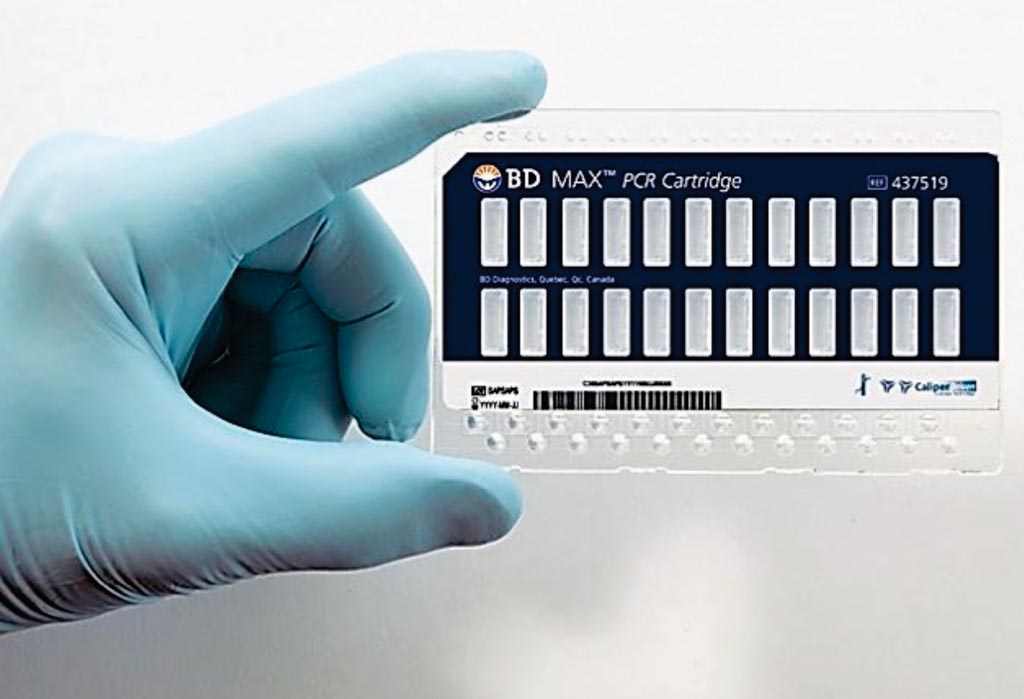Bacterial Panel Detects Stool Pathogens from Swabs
By LabMedica International staff writers
Posted on 25 Apr 2017
Repeated bouts of diarrhea and persistent diarrheal disease disrupt intestinal function and absorption, making diarrheal disease a leading cause of malnutrition in children less than 5 years of age. Importantly, diarrheal disease is both treatable when correctly diagnosed and preventable via proper infection control measures.Posted on 25 Apr 2017
In the USA, Salmonella, Campylobacter, Shigella, and Shiga toxin-producing Escherichia coli are the most common bacterial pathogens, and they are usually associated with foodborne illnesses. Identifying the cause of diarrhea is important for the treatment of patients and for public health intervention through outbreak management.

Image: A Polymerase Chain Reaction (PCR) processing card for the BD Max molecular diagnostics platform (Photo courtesy of BD Diagnostic Systems).
Microbiologists at Cincinnati Children’s Hospital Medical Center collected 272 sequential rectal swab samples from August 2015 to December 2015 for conventional bacterial culture and Shiga Toxin testing, as standard of care. The team evaluated a molecular test to detect pathogens from the stool swabs. Discrepant test results were resolved using Verigene Enteric Pathogens Nucleic Acid Test (EP) on the Verigene System.
The molecular test evaluated was the BD MAX Enteric Bacterial Panel (BDM-EBP), which is designed and FDA-cleared to detect Salmonella, Shigella, Campylobacter, and Shiga toxin genes stx1/2 from stool samples. There were also 36 challenge samples (13 Salmonella spp., three Shigella spp., 10 Campylobacter spp., and 10 Shiga toxin positive Escherichia coli) that were tested using reference strains and previous patient isolates diluted to103-104 cfu/mL in saline then added to Sample Buffer Tube (SBT) with negative stool matrix delivered via a swab.
The scientists found that from a total of 272 rectal swab specimens that were evaluated, 89 were positive by culture and/or MAX EBP. All discrepant results were BDM-EBP positive and culture negative. There were 21/31 (68%) of the apparent false positive BDM-EBP discrepant results resolved as positive with Nanosphere’s Verigene EP. They reported that 8.8% of the patient samples did not initially yield a result on the BDM-System. Upon repeat, half of the problematic samples resolved, and 4.4% of the total specimen tested did not yield a result. All organisms in the challenge samples were detected.
The authors concluded that although stool is the optimal specimen for identifying enteric bacterial pathogens, polymerase chain reaction (PCR) from swabs is more sensitive than culture from swabs, and rectal swabs can be used for testing with BDM-EBP for detection of Salmonella spp., Shigella spp., Campylobacter spp., and Shiga toxin 1 and 2 genes. Additionally, BDM –EBP PCR results are available 34 to 47 hours sooner that with conventional cultures from rectal swabs. The study was published on April 8, 2017, in the journal BMC Clinical Pathology.














